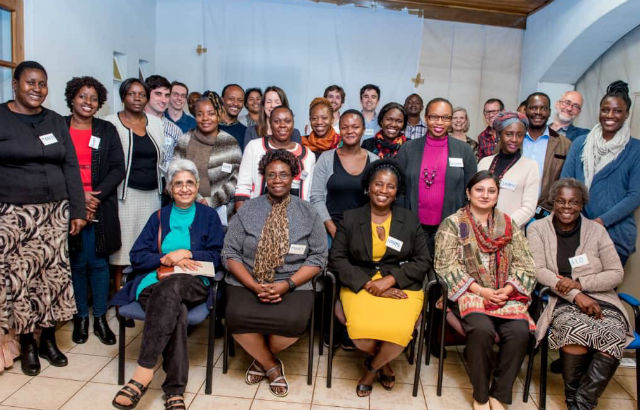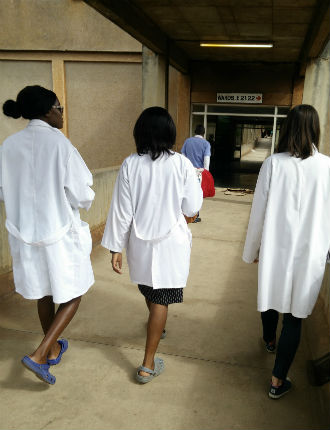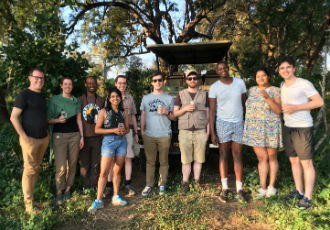Working towards a common goal of solving child malnutrition
Ruairi Robertson is a Sir Henry Wellcome Postdoctoral Research Fellow based at the Blizard Institute, Queen Mary University of London. In the second part of his blog covering a recent trip to Zimbabwe, he reports from a symposium bringing together experts from all over the world and from different fields, who are hoping to find a solution to widespread child malnutrition.

A little girl, no more than 18 months old, stood in her cot staring at the visitors who had just walked into the hospital ward. She didn’t cry when she was picked up, she just kept staring in amazement. The girl had been admitted with complicated severe acute malnutrition (SAM) and had been left in the paediatric ward of Parirenyatwa Hospital by her father who had not been able to take care of her. Fortunately, thanks to the care of the hospital staff, she was now doing well.
We were visiting one of the hospitals in Zimbabwe involved in a research study called HOPE-SAM (Health Outcomes, Pathogenesis and Epidemiology of Severe Acute Malnutrition). Through the HOPE-SAM study we are examining the causes and long-term health outcomes of children like this girl who are diagnosed with SAM, the most severe form of child malnutrition.
Despite 24-hour in-patient care, antibiotics and nutritional therapy, 10 to 40 per cent of children hospitalised with SAM will die either in hospital or in the weeks after discharge. Those who do survive may have long-term health risks and may not fully recover their growth.
Finding new approaches to a persistent problem

Queen Mary have longstanding experience in global health research and are emerging as a leader in this field. On this trip, we were holding the Annual Malnutrition Symposium in Harare, Zimbabwe, which had attendees from the UK, Zimbabwe, Zambia and as far as Pakistan.
Most importantly, however, this was not just a symposium for nutrition experts. There were paediatricians, doctors, microbiologists, immunologists, psychologists, sociologists, geographers, nurses, psychiatrists, policy experts and more. Over two days, a broad mix of expertise and knowledge was shared among this diverse, global group.
The diversity of expertise aimed to bring new ideas and approaches to a persistent problem that has no single solution. Malnutrition continues to underlie 45 per cent of all child deaths around the world. It is a complex disorder related to infection, social and psychological support, economics and of course nutrition. Therefore future interventions to combat the issue will require a combination of therapies.
We heard from a paediatrician in Bulawayo Hospital who integrated play therapy into the paediatric ward. Simple toys made from discarded bottles and yogurt pots intrigued and entertained the sick children and engaged them with their mothers. It was proposed that this could help with recovery of the cognitive deficits associated with malnutrition.
Dealing with maternal depression
We also heard from three nurses who are on the frontline of this challenge. They engage with the caregivers of sick children, listening to their backgrounds and explaining to them what our study is trying to achieve. They explained to us the difficult home settings that these mothers and children come from, often with no fixed address and no income.
And we heard from psychiatrists who developed the ‘friendship bench’, a simple, accessible form of cognitive behavioural therapy that helps reduce depression. Maternal depression is one of the biggest predictors of child undernutrition.
Professor Paul Kelly, a gastroenterologist from Queen Mary who is based in the University Teaching Hospital in Lusaka, Zambia, told us how he examines the intestines of undernourished children and has found that they are structurally and functionally impaired even in apparently otherwise healthy children.
He is conducting a trial to see if certain interventions can help repair this damaged gut in malnourished children and help with their recovery. Professor Mauro Perretti, Dean of Research in the School of Medicine and Dentistry at Queen Mary, also gave an inspiring talk on the immune system and we discussed how this could be applied to malnutrition.
Combining expertise from different fields

There was a sense of excitement in the room that I haven’t experienced before at other conferences or meetings. Everyone from students to seasoned experts, nurses to professors, had an input, each providing their ideas and opinions for the common goal. The meeting culminated in these ideas being combined into a potential future study where each of these aspects of malnutrition (psychological support, nutrition, medical intervention, finance) would be targeted simultaneously into a package of care.
It is still unclear if this combined package of care would help to improve malnutrition, which is such a complex problem. But, importantly, it provides a template for future work. No complex problem has a simple solution. Whether it is a problem related to global health, the environment, economics or any other field, complex problems require complex solutions.
Combining expertise from many different fields, even those that may not seem relevant, allows you to gain a new perspective of an issue that has not been observed before and may potentially lead to a new solution. Whether that is the case for malnutrition, we will have to wait and see.
More information:
- Read part one of the blog: Zimbabwe’s new era and hopes for treating child malnutrition
Related items

8 January 2025
For media information, contact: